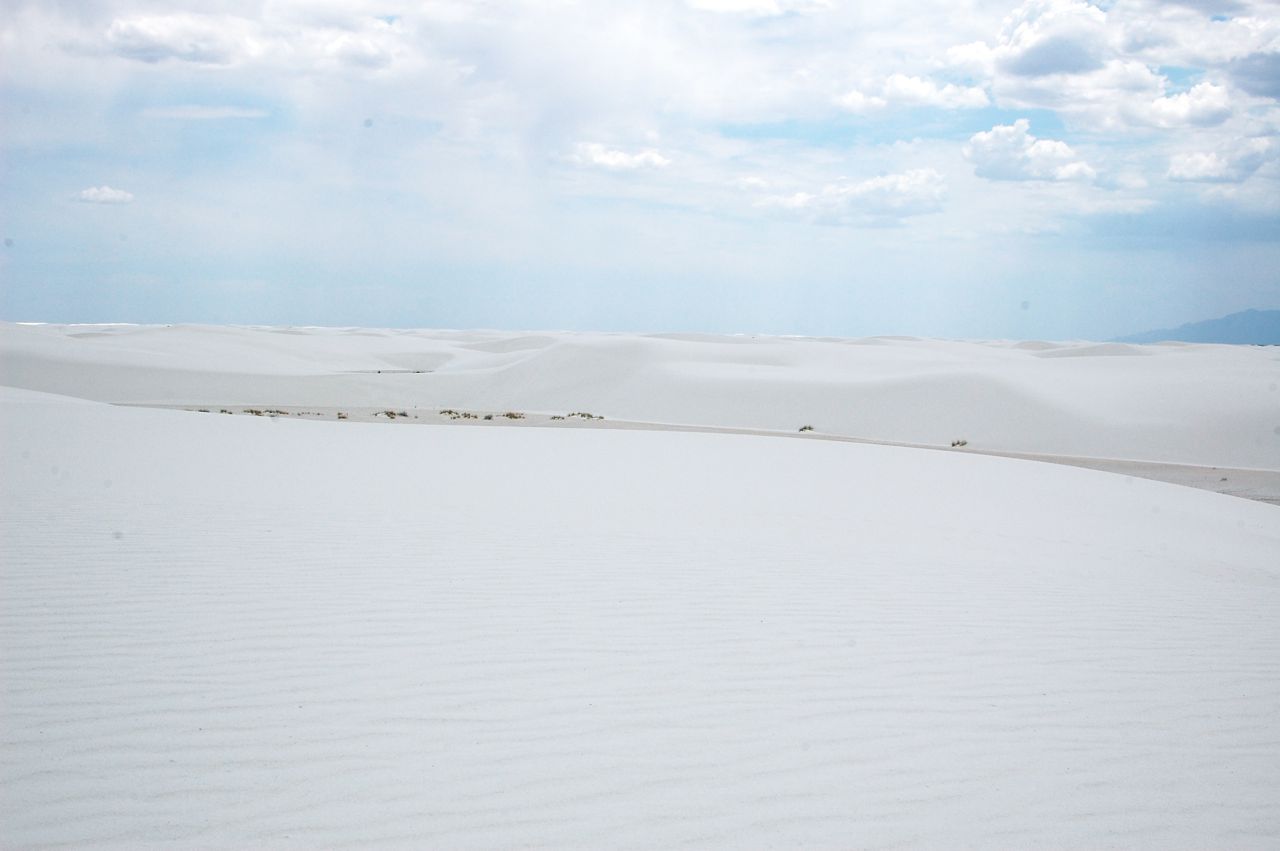White Sand Dunes are very unique as contrary to most other dune fields they are made of gypsum, not quartz. This is also the world's largest gypsum field. Being made of the pure gypsum (hydrous calcium sulfate) these dunes are whiter than the purest snow we had ever seen. They also seem to be even better than snow at reflecting light, so even when the sun was hiding behind the clouds we still needed to wear sunglasses.
In the park we planned to go for a 4.6 miles (7.4 km) long hike to Alkali Flats, but we abandoned this plan due to extreme heat, no breeze and eye-blinding properties of the dunes. In retrospect it was a good idea as it is very easy to become disoriented in the dunes and even though we hiked only a tiny portion of that hike, we almost got lost... Luckily, the park marks all of its trails with orange posts buried in the sand and thanks to them we were able to retrace our way back to the car.
Here are several photos from the portion of Alkali Flat hike we did:







I still hope to be able to do this hike in its full length at other time point in my life, and maybe also along one of the monthly moonlight hikes offered by the park rangers.
Other hike that we did during our visit to White Sands was 1 mile (1.6 km)-long hike on Dune Life Nature Trail. It goes through the part of the dune filed that is more heavily vegetated, and hence also richer in desert animals (such as mice, lizards, snakes, insects, some birds). We did not see too many animals (I guess they were clever enough to hide from the heat), but we saw many animal tracks:

We followed this set of tracks to the nearby scrubs...

... and there was our reward, the Bleached Earless Lizard:

Some other animals and plants that we encountered in the dunes:





The tree (willow) that is still above the sand:

...and here some that already start to surrender to the dunes:

We also went for a short (0.5 km) Interdune Boardwalk, where I took these pictures:



Curio fact about the White Sand Dunes: the state of New Mexico introduced Oryx, a large African antelope to the Tularosa Basin (which includes the park) to establish a huntable big game population. How crazy! I have no idea what they were thinking. Or if they were thinking at all...